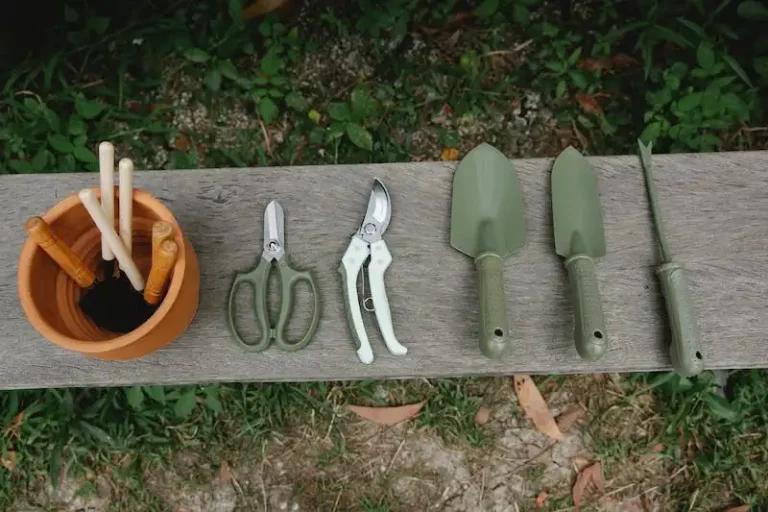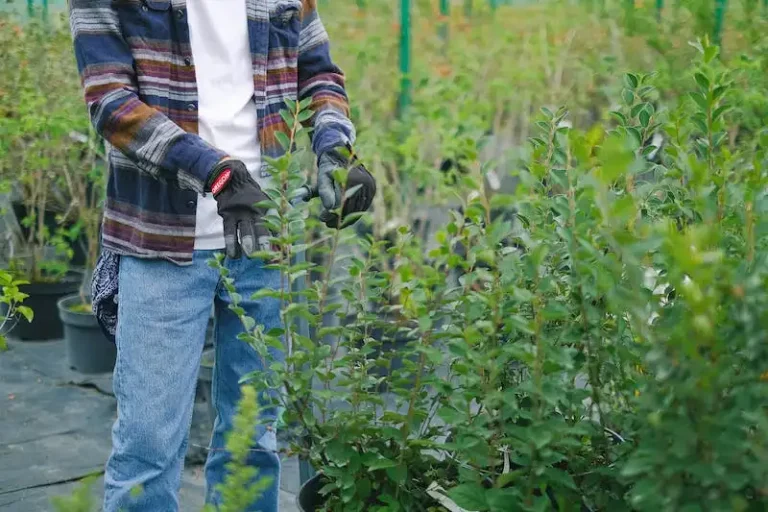The watermelon plant, known scientifically as Citrullus lanatus, is a fast-growing vine that belongs to the Cucurbitaceae family. It is a warm-season crop that thrives in areas with long, hot summers and high humidity. The watermelon plant is well-adapted to a variety of soil conditions, but it prefers well-drained sandy loam.
This plant is commonly grown for its delicious and refreshing fruit, which is a favorite summer treat for many people. Watermelons are large, round fruits with a sweet, juicy flesh that can be red, pink, or yellow in color. Some varieties are seedless, while others have brown or black seeds.
If you’re planning to grow watermelons in your garden, it’s important to choose a variety that is well-suited to your climate and planting conditions. For example, if you live in a cooler region like Colorado, you may want to consider planting early-maturing varieties that can withstand shorter growing seasons. On the other hand, if you live in a hot and humid area, you may opt for heat-tolerant varieties that can thrive in these conditions.
Watermelons are typically planted as transplants rather than direct-seeded in the garden. Starting seeds indoors can give you a head start on the growing season and improve your chances of success. Transplants should be planted in well-prepared soil that has been amended with organic matter, such as aged compost or well-rotted manure. The soil should be rich in nutrients and have a slightly acidic to neutral pH.
One of the best ways to ensure a successful watermelon crop is to provide the plants with consistent moisture. Watermelons require about 1 to 2 inches of water per week, especially during hot and dry periods. They have a shallow root system, so it’s important to keep the soil evenly moist but not waterlogged. Mulching around the plants can help to conserve soil moisture and suppress weed growth, which can compete with the watermelon plants for nutrients and water.
Like other plants, watermelons are susceptible to a variety of diseases and insect problems. The most common diseases that affect watermelons include powdery mildew, downy mildew, and fusarium wilt. Insect pests, such as aphids, cucumber beetles, and squash bugs, can also cause damage to the plants. If you notice any problems with your watermelon plants, it’s important to take action promptly to prevent further damage.
Watermelons are typically ready to harvest about 70 to 90 days after planting. Ripe watermelons will have several indicators of maturity, such as a dull rind, a yellow or creamy underside, and a sweet fragrance. The best way to determine if a watermelon is ripe is by tapping it with your knuckles. A ripe watermelon will make a deep, hollow sound, while an unripe one will sound more like a thud.
In conclusion, the watermelon plant is a fast-growing and heat-tolerant vine that produces sweet and refreshing fruit. With proper care and attention to its growing conditions, you can enjoy a bountiful harvest of these juicy melons in your own garden. Whether you prefer them seeded or seedless, red or yellow, watermelons are a summer beauty that will continue to delight your taste buds.
Watermelons
Watermelons, also known as “peter” and “citrullus lanatus,” are a fruit native to Africa and widely cultivated for their sweet taste and high water content. They are a summer favorite, enjoyed for their refreshing properties. Watermelons are a staple in many households and are often consumed during picnics, barbecues, and other outdoor gatherings.
Watermelons come in a variety of types, including seeded, seedless, and icebox melons. Seeded watermelons have large, black seeds that can be easily removed. Seedless watermelons, as the name suggests, do not have seeds, creating a completely seedless eating experience. Icebox watermelons are smaller in size, making them convenient for individual servings or small families.
When looking for a ripe watermelon, there are a few key indicators to consider. First, check for a creamy yellow spot on the bottom of the melon, known as the “sugar spot.” This is a sign that the melon has ripened and is ready to eat. Additionally, a ripe watermelon should feel heavy for its size and have a hollow sound when tapped.
Watermelons are typically grown from seed, either through direct sowing or from seedlings. Direct sowing involves planting the seeds directly into the soil, while starting from seedlings allows for a head start and ensures a stronger, more viable plant. Watermelons prefer sandy, well-drained soil and thrive in warm weather conditions. They require a wide spacing to allow for proper vine growth and fruit production.
Watermelons are known for their ability to tolerate heat and humidity, making them a suitable fruit to be grown in states like Oklahoma. However, they can be susceptible to diseases and insect infestation, so proper care and maintenance are essential. Providing consistent watering, proper fertilizers, and managing any stressors can help prevent common issues.
Watermelons are pollinated by bees, so it is important to ensure a sufficient population of bees in the garden. Starting from earlier in the season, with the presence of flowers and grasses, can attract bees to the area. This will increase the chances of successful pollination and fruit production.
When harvesting watermelons, it is best to wait until they are fully ripe. This is determined by the sound produced when the melon is tapped, as well as the deepening of the color and the patience to allow it to fully mature. To harvest, gently twist the melon from the vine, ensuring to leave a small section of the stem intact. This will help prolong the melon’s freshness and prevent any rotting at the harvest site.
Watermelons are a versatile fruit that can be enjoyed in many different ways. They can be eaten fresh, used in fruit salads, blended into smoothies, or turned into refreshing beverages. Their sweet flavor and high water content make watermelons a popular choice for hydration during hot summer days.
In conclusion, watermelons are a delicious and hydrating fruit that can be easily cultivated in home gardens. They come in various types, including seeded, seedless, and icebox melons. Watermelons require proper care and attention to prevent diseases and maintain healthy growth. When properly harvested and enjoyed, watermelons can provide a taste of summer and a refreshing treat.
About Watermelons
Watermelons are a popular fruit that thrive in warm summer climates. This refreshing and sweet product is not only delicious, but it also offers several health benefits. Its high water content helps keep you hydrated, and it is also a good source of vitamins A and C.
Watermelons come in different varieties, including the commonly known “crimson sweet” and the smaller “icebox” watermelons. The flesh of watermelons can vary in color, ranging from deep red to yellow. The yellow variety, often called “moon and stars,” has a unique appearance with speckles resembling stars and a yellow flesh.
When it comes to cultivation, watermelons can be grown in gardens or even in containers for those with limited outdoor spaces. However, they require some special considerations to thrive. Watermelon plants are susceptible to pests such as beetles and require proper irrigation to avoid overwatering or underwatering.
If you’re a beginner, planting watermelon seeds directly in the ground is a viable option. However, it’s always a good idea to start seedlings indoors and transplant them when they are young. This gives them a better chance of survival and helps ensure a successful crop.
Watermelons need well-draining soil and prefer slightly acidic to neutral pH levels. Organic fertilizer is recommended for optimal growth. The plants also require plenty of space to spread their long vines and tendrils. It’s important to keep the area around the plants free from weeds to prevent competition for nutrients.
Watermelons are ready for harvest when they sound hollow and have a dull, rather than shiny, rind. To know if a watermelon is ripe, you can also check the tendril nearest the fruit. When it turns brown and dry, it’s a sign that the watermelon is ready to be picked.
If you live in a colder climate or have a shorter growing season, you can start watermelon plants indoors and transplant them outside after the risk of frost has passed. In areas with longer growing seasons, watermelons can be directly seeded in the ground at the beginning of summer.
Watermelons can be stored for a longer period by harvesting them only when they are thoroughly ripe. It’s best to continue ripening them at room temperature before consuming. In general, storing watermelons in a cool, dry place can help extend their shelf life. However, it’s important to note that once cut, watermelons should be consumed within a few weeks.
| Watermelon Attributes | |
|---|---|
| Growing Zones | Varies, but typically zones 3-12 |
| Soil Type | Well-draining soil, rich in organic matter |
| Recommended Fertilizer | Organic fertilizer |
| External Factors | Beetles, poor irrigation, high humidity |
| Harvest Time | Varies depending on the variety |
| Storage | In a cool, dry place |
If you want to learn more about watermelons or get advice on growing them, please refer to the citation provided at the end of this article. Watermelons are not only a tasty and refreshing fruit, but they also offer several health benefits. So why not consider adding them to your garden or home this summer?
Thank you for reading!
Read Next
If you’re looking to learn more about watermelon plants, here are some additional resources:
1. Watermelon in the Encyclopaedia
If you want a comprehensive guide to watermelon plants, check out the Encyclopaedia entry on watermelons. It covers everything from selecting the right variety to proper watering and fertilizing techniques.
2. How to Grow Weed-Free Watermelon Plants
In this article, you’ll learn how to keep your watermelon plants free from weeds, ensuring optimal growth and harvest. Weeds can compete with watermelons for resources, so it’s important to keep them under control.
3. Watermelon Planting Guide for Different Seasons and Regions
Depending on where you live, the best time to plant watermelons and the ideal growing conditions may vary. This guide will give you insights into planting watermelons in different seasons and regions.
4. Harvesting and Storing Watermelon Plants
Once your watermelons are ripe, how do you go about harvesting and storing them? This article provides tips on when to harvest, how to store the fruit, and how to tell if a watermelon is ready to be picked.
5. Common Watermelon Plant Problems and How to Treat Them
Watermelon plants may face various issues such as insect infestation, diseases, and nutrient deficiencies. This resource will help you identify and treat common problems that can affect your watermelon plants.
Remember to always consult reliable sources, such as PlantVillage and gardening experts, for the most up-to-date and accurate information on watermelon plants.




